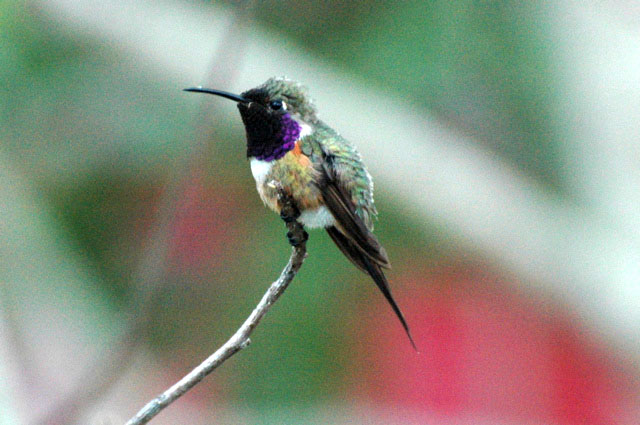Great Inagua
Great Inagua offers the very best wetlands in The Bahamas and supports a large breeding colony of American Flamingoes, thanks to the efforts of the Bahamas National Trust and local park wardens since the 1950s. This island also supports the Inagua race of the Cuban Parrot. The endemic Inagua Woodstar is found only on Great and Little Inagua.

Exploring around the southwest corner of the island and keeping to the paved roads should be safe but leaving the paved roads can be dangerous and on the salt pan dykes it would be easy to get lost with no help around. You will get the most from this island by using a local guide. Contact the Bahamas National Trust warden, Henry Nixon (242-339-1616 or 464-7618) or Casper Burrows (242-395-0856) who will help you or put you in touch with a local guide.
Many local and migratory birds can be found by birding around Matthew Town and out to the lighthouse. Cuban Parrots and Burrowing Owls are common around the town and this is the best place to take your time to find the newly declared endemic, the Inagua Woodstar.

Local and migratory birds can also be found on the trails around the wetlands in the numerous stands of woodland throughout the island. However, a guide is recommended when going off the paved roads. Be sure to take plenty of food and water, a hat, sunblock etc.
Inagua National Park includes Lake Windsor which hosts over 40,000 breeding American Flamingos.

Little Inagua is the largest uninhabited island in the Caribbean region and is a national park, managed by the Bahamas National Trust. There are no facilities whatsoever and landing is discouraged.
Endemic: Inagua Woodstar
Bahamian specialties: American Flamingoes, Bahama Parrots, White-cheeked Pintails, Western Spindalis, American Kestrels, Burrowing Owls, and Snowy Plovers, as well as many species of wintering shorebirds

Other birds: Brown Pelicans, Tricolored Herons, Snowy Egrets, Reddish Egrets, Double-crested and Neotropic Cormorants, Roseate Spoonbills, and Soras, as well as many species of wintering shorebirds such as Snowy Plovers.
The only way to get to Great Inagua is by flying from Nassau. At the time of writing there are three flights a week so it is necessary to spend at least two nights on the island. There are several small hostelries that can be found with a search on the internet, including Morton House run by the Morton Salt Company and the pleasant Brenville Suites near the airport (242-339-1004) which is a good spot to see the Inagua Woodstar.
If you decide to rent a vehicle, be sure that you have a spare wheel and tools and set out with a full tank of gas, food and water.
You will get the most from this island by using a local guide. Contact the Bahamas National Trust warden, Henry Nixon (242-339-1616 or 464-7618) or Casper Burrows (242-395-0856) who will help you or put you in touch with a local guide.
